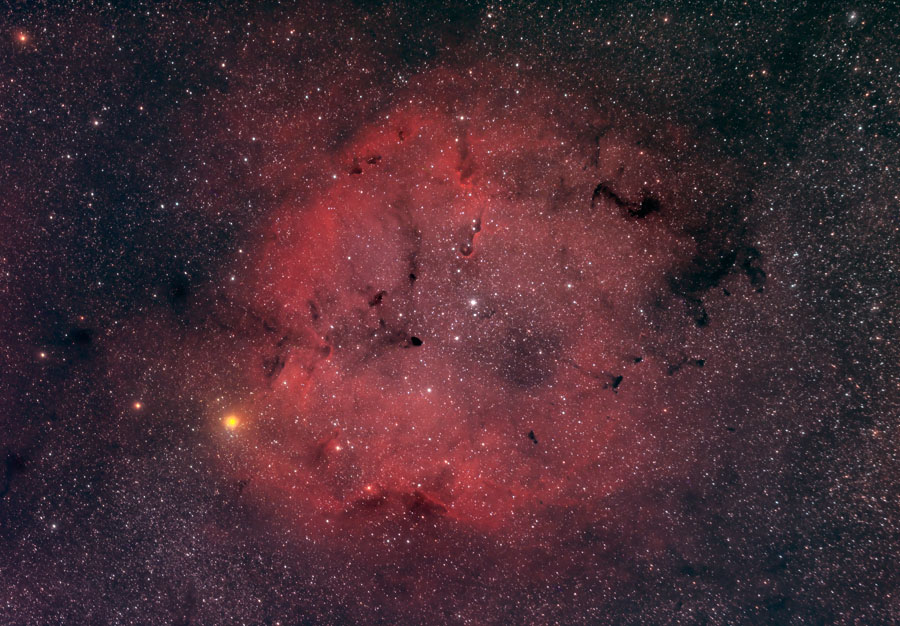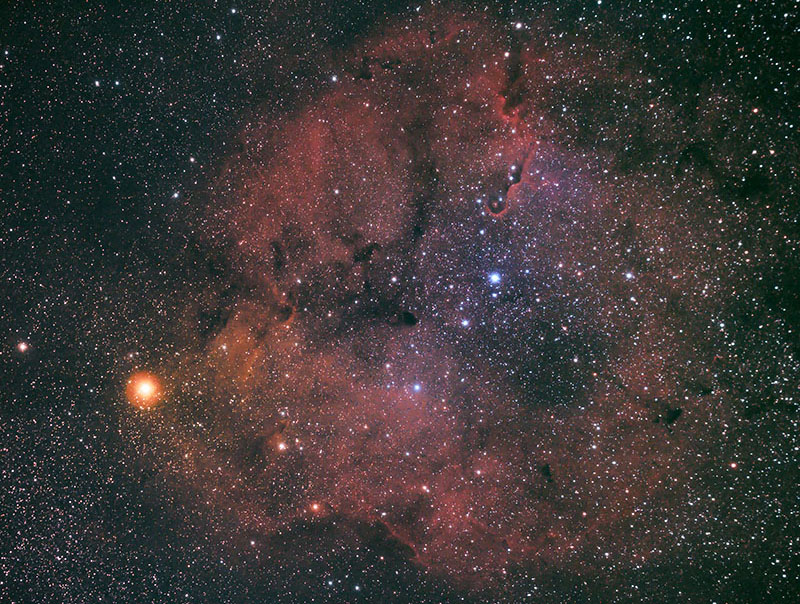
StormEffects
Nightscapes & Deep Sky Colors
Astrophotography © Brian A. Morganti
IC1396 - Large Emission Nebula Complex
& Hershel's Garnet Star
Cepheus

|
IC 1396 is a large emission nebula 90 x 90 arc minutes in size, magnitude of 3.5, and is located 2,500 light-years from Earth. Magnitude 4 Mu Cephei, also known as Herschel's Garnet star, shines brightly to the left (north) in this image. A very luminous red supergiant, Mu Cephei is one of the largest stars visible to the naked eye and the largest known star in our Milky Way Galaxy! This bloated red giant star is approximately 1,650 times larger than our Sun's solar radius, and were it placed in the Sun's position, its radius would reach between the orbits of Jupiter and Saturn. Mu Cephei could fit almost 4.5 billion Suns into its volume while emitting 350,000 times the power of our Sun. Only five known stars (VY Canis Majoris, KW Sagittarii, KY Cygni, V354 Cephei and VV Cephei) are believed to be larger. It is so large that it could fit 6.4 quadrillion Earths in it. If Earth were a golf ball (about 1.7 in/4.3 cm), Mu Cephei would be greater than the length of two Golden Gate Bridges laid end-to-end (about 3.4 mi./5.5 km). Mu Cephei is nearing death. It has begun to fuse helium into carbon, whereas a main sequence star fuses hydrogen into helium. The helium-carbon cycle shows that Mu Cephei is in the last phase of its life and may explode as a supernova 'soon' in astronomical terms, although this might not be for some millions of years. Also of interest is "The Elephant Trunk" which is a dark nebula harboring star formation shown above in the upper quarter of IC 1396. North is to the left in the above image. IMAGE DETAILS:
|
Previous Version shown below from October 2010

|
IMAGE DETAILS:
|
Astrophotography - Nightscapes & Deep Sky Colors